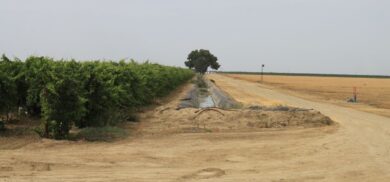
The Multibenefit Land Repurposing Program: Envisioning the social, economic, and environmental possibilities of fallowed lands
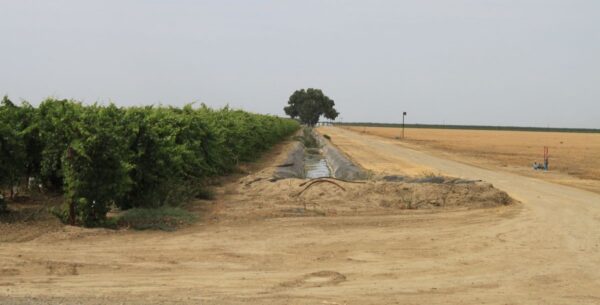 At the January meeting of the California Water Commission, Keali’i Bright, Assistant Director of the Department of Conservation’s Division of Land Resources, gave a presentation on the Department’s Multibenefit Land Repurposing Program.
At the January meeting of the California Water Commission, Keali’i Bright, Assistant Director of the Department of Conservation’s Division of Land Resources, gave a presentation on the Department’s Multibenefit Land Repurposing Program.
Mr. Bright began by acknowledging that the Department of Conservation is not an expert on water or habitat, but the Department does have a long history of supporting practitioners and entities working within watersheds.
“We support them to develop strategies to address the bigger landscape challenges that they’re facing, from the top of the watershed down to the groundwater basins on the valley floor,” he said. “And with the drought and with groundwater levels being depleted, we’re really facing this moment where we’re going to exacerbate all of the pressures on our landowners, agricultural leaders, communities, and people who rely on these sources.”

California Water Agencies Hoped A Deluge Would Recharge Their Aquifers. But When It Came, Some Couldn’t Use It

It was exactly the sort of deluge California groundwater agencies have been counting on to replenish their overworked aquifers.
The start of 2023 brought a parade of torrential Pacific storms to bone dry California. Snow piled up across the Sierra Nevada at a near-record pace while runoff from the foothills gushed into the Central Valley, swelling rivers over their banks and filling seasonal creeks for the first time in half a decade.
Suddenly, water managers and farmers toiling in one of the state’s most groundwater-depleted regions had an opportunity to capture stormwater and bank it underground. Enterprising agencies diverted water from rushing rivers and creeks into manmade recharge basins or intentionally flooded orchards and farmland. Others snagged temporary permits from the state to pull from streams they ordinarily couldn’t touch.
Yet not everyone was able to fully capitalize on Mother Nature’s gift.

Did winter storms replenish California’s depleted groundwater supplies? Here’s what data shows
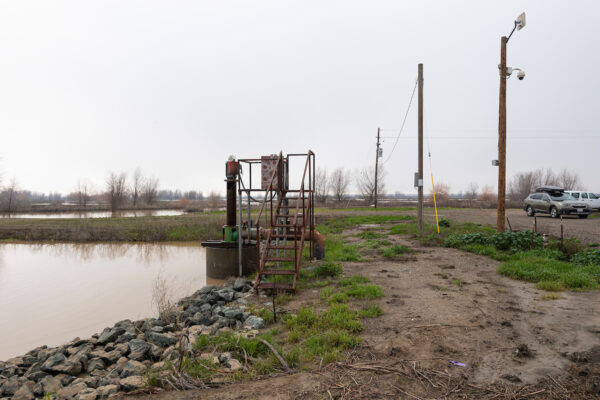
Winter storms have filled California’s reservoirs and built up a colossal Sierra snowpack that’s nearly twice its normal size for this time of year. But years of dry conditions have created problems far beneath Earth’s surface that aren’t as easily addressed.
Groundwater — found in underground layers containing sand, soil and rock — is crucial for drinking water and sustaining farms. During drought years, 60% of California’s annual water supply comes from groundwater. This water is not easily replenished, especially as many groundwater basins across the state are critically overdrafted.
“Even if we have a substantial wet year, it’ll take many years for basins to fully recover, if at all,” said Paul Gosselin, deputy director of sustainable groundwater management for the California Department of Water Resources.
Click here to continue reading at the San Francisco Chronicle (gift article).
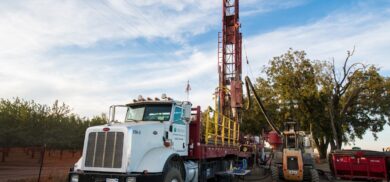
Amid well-drilling and pumping, calls grow for stronger California water regulation
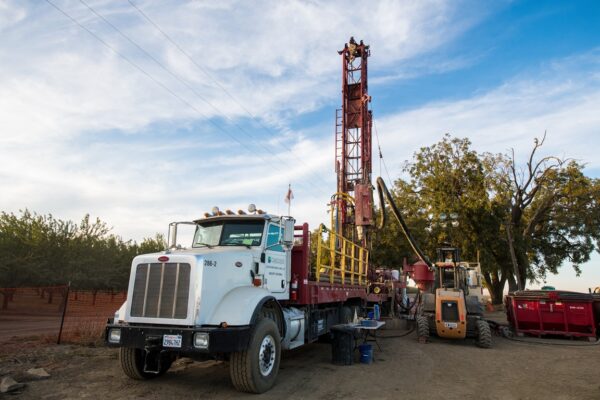
Florence Low /DWR
In 2014, California adopted a landmark law aimed at combating excessive groundwater pumping, especially in farming areas of the San Joaquin Valley where many families were seeing their wells sputter and run dry.
More than eight years later, many local agencies are still working on long-term groundwater sustainability plans. Water levels have continued to decline, and in many areas household wells have continued to dry up — including some that have failed since torrential rains soaked the state in January.
Now, with more wells at risk of running dry, activists are urging the state to intervene in five Central Valley areas where they say plans are inadequate to combat chronic overpumping.
“At this point, we just don’t believe that the locals will actually take into consideration drinking water needs,” said Nataly Escobedo Garcia, a policy coordinator with the environmental justice group Leadership Counsel for Justice & Accountability.

SGMA in the news
Anger showed at Tehama County well registration program workshop
“A workshop on Tehama County’s well registration program drew many residents to the Red Bluff Community Center Wednesday evening, with some loudly voicing their concerns and anger. Before residents could ask questions about the program, Public Works Deputy Director Justin Jenson reviewed the program and how the county got to this position. The Tehama County Flood Control and Water Conservation District adopted a resolution requiring all wells in the county to be registered and all qualified APNs to pay $0.29 per acre per year to the cost of the registration program. Jenson said a fee would be assessed to all APNs large enough to cover the billing cost. This fee is assessed regardless of property use and will initially be used to set up a well registration program. … “ Read more from the Red Bluff Daily News.
Farmers race to sink water into ground after storms
“Growers in the San Joaquin Valley are hurriedly building temporary groundwater sinking basins to take advantage of inexpensive, uncontrolled seasonal water. And they are racing to replenish underground water supplies that could carry them through drier years ahead. In Tulare County, farm manager Zack Stuller’s phone started ringing nonstop in late December, after a series of intense storms fueled by atmospheric rivers walloped California, dumping snow in the mountains and rain in the lowlands. Clients of Stuller’s farm management and land development business took note of conditions in the San Joaquin River and Kaweah River watersheds and anticipated an opportunity to conduct on-farm recharge—if they had a place to put it. “Everyone is scrambling,” Stuller said as he surveyed a recent project in Exeter. “We weren’t prepared for this much water, and we can’t build them fast enough.” … ” Read more from Ag Alert.
San Joaquin County regional water partners’ first aquifer recharge and groundwater test a success
“Water agencies in California’s Central Valley and East Bay took a major step forward in February on a joint pilot project to diversify water supplies, enhance drought resilience and restore a depleted aquifer through groundwater recharge. For the first time, the East Bay Municipal Utility District (EBMUD) extracted groundwater banked deep below farmland in San Joaquin County into the utility’s Mokelumne aqueducts, which convey surface water from Pardee Reservoir in the Sierra Nevada foothills to customers in the East Bay. This extraction was a key step for DREAM – short for Demonstration Recharge, Extraction and Aquifer Management – a pilot project involving EBMUD, North San Joaquin Water Conservation District, San Joaquin County, and Eastern Water Alliance. The unique urban-agricultural partnership is designed to improve water supply reliability for both San Joaquin County farmers and EBMUD customers in Alameda and Contra Costa counties while recharging the critically over-drafted Eastern San Joaquin County Groundwater Basin. … ” Read more from the County of San Joaquin.
Eastern San Joaquin groundwater plan gets a thumbs up
“The California Department of Water Resources has recommended the approval of the Eastern San Joaquin Water Authority Groundwater Sustainability Plan. San Joaquin County officials said the recommendation is a significant step toward ensuring the region will have enough groundwater by 2040. “DWR’s acceptance of our groundwater sustainability plan is a tribute to the hard work and historic collaboration among 16 diverse Groundwater Sustainability Agencies (GSAs) that joined together to build consensus around realistic and common-sense solutions with the unified goal of sustainability,” San Joaquin County Board of Supervisors Chairman Robert Rickman said in a Friday media statement. … ” Read more from the Lodi Sentinel.
Westlands Water District receives recommendation for approval to advance groundwater storage and sustainability efforts
“Today, the Department of Water Resources (DWR) announced the recommendation of approval for the Westside Subbasin Groundwater Sustainability Plan (Westside GSP). Westlands Water District (District) is proud to have a plan for management of groundwater that provides a detailed blueprint for achieving long-term groundwater sustainability in the heart of the San Joaquin Valley’s prime farmland while avoiding undesirable impacts to the Westside Subbasin and to infrastructure critical to California. “We are grateful that DWR staff believe the District has taken sufficient actions to address the deficiencies DWR previously identified, and are now preparing to recommend approval,” said Jeff Fortune, president of Westlands’ Board of Directors. … ” Read more from Westlands Water District.
Tulare County Groundwater Sustainability Plans deemed inadequate – aquifer risks being taken over by the state
“The Department of Water Resources (DWR) today, March 2, announced their decision on the groundwater sustainability plans for 12 critically overdrafted groundwater basins in Central California. Of the 12 basins, DWR declared that six did not submit plans that demonstrate they will reach sustainability by 2040. Two of those basins are in Tulare County and cover a majority of its aquifer. The only basin recommended for approval was Kings Basin which covers mostly Fresno County and only a small part of Tulare County. If Tulare County GSAs can’t come up with a workable plan to achieve sustainability, the management of Tulare County’s groundwater might be taken over by the state. The two sub-basins that did not win DWR approval are the Kaweah sub-basin and the Tule sub-basin. … ” Read more from the Valley Voice.
Paso Robles farmers ask for fair water rules after supervisors repeal planting ordinance
 “The San Luis Obispo County Board of Supervisors voted 3-2 on Tuesday to repeal the planting ordinance for the Paso Robles Groundwater Basin before it could take effect on March 1, as farmers called for a more fair approach to managing the resource. For the time being, it means SLO County will return to its 2015 permitting rules for sowing crops irrigated by basin groundwater using an exemption limit of 5 acre-feet of water per year, rather than the increase to 25 acre-feet approved by the conservative majority in December. According to the restored rules, the county can only issue a planting permit to farmers if the crops are water neutral — meaning the new crop uses the same amount of water as the previous crop on that land, with an exemption of a maximum additional 5 acre-feet of water per year, according to Planning Division manager Airlin Singewald. … “ Read more from the San Luis Obispo Tribune.
“The San Luis Obispo County Board of Supervisors voted 3-2 on Tuesday to repeal the planting ordinance for the Paso Robles Groundwater Basin before it could take effect on March 1, as farmers called for a more fair approach to managing the resource. For the time being, it means SLO County will return to its 2015 permitting rules for sowing crops irrigated by basin groundwater using an exemption limit of 5 acre-feet of water per year, rather than the increase to 25 acre-feet approved by the conservative majority in December. According to the restored rules, the county can only issue a planting permit to farmers if the crops are water neutral — meaning the new crop uses the same amount of water as the previous crop on that land, with an exemption of a maximum additional 5 acre-feet of water per year, according to Planning Division manager Airlin Singewald. … “ Read more from the San Luis Obispo Tribune.
Cuyama Valley groundwater plan approved. What does this mean for Big Carrot?
“The embattled Cuyama Valley groundwater basin now has a state-approved plan that aims to create a sustainable source of water mainly through groundwater pumping reductions. On Thursday, the California Department of Water Resources approved the groundwater sustainability plan drafted by the Cuyama Basin Groundwater Sustainability Agency, a joint powers agency comprised of Kern, Santa Barbara, San Luis Obispo and Ventura counties as well as the Cuyama Community Services District and Cuyama Basin Water District. The plan was required under the California Sustainable Groundwater Management Act because the Cuyama basin is considered critically overdrafted. … ” Read more from the San Luis Obispo Tribune.
Ridgecrest: Groundwater Authority board approves spending $7.8 million to plan importing water project
“At the regular board meeting for the Indian Wells Valley Groundwater Authority on February 8, the IWVGA board approved the authorization of three contracts to prepare for the water importation system they plan to use for bringing the IWV groundwater basin into sustainability. The three contracts total to $7,867,312. These contracts are largely made possible by a $7.6 million dollar grant which IWVGA secured from the California Department of Water Resources in May of 2022. The grant is for the implementation of projects to help achieve a sustainable groundwater supply for the region, and work on these projects must be complete by June 30, 2025 unless agencies are successful in extending the deadline. … ” Continue reading at the Ridgecrest Independent.
Ridgecrest City Council to hear about groundwater less often
“If it seems like the agenda for Wednesday’s City Council meeting is missing something, maybe that’s because it is. For the first time in many meetings, the council will not be hearing from Council Member Scott Hayman, the city’s representative to the Indian Wells Valley Groundwater Authority today. Hayman has routinely delivered a groundwater update as part of every meeting. This practice is changing after an informal discussion at the most recent council meeting. Mayor Eric Bruen suggested the item be dropped from some agendas after Hayman gave his groundwater update Feb. 15. “Do we need to have water on the agenda every time?” Bruen asked, adding “We’ve hee’d and haw’d with this.” … ” Read more from the Ridgecrest Independent.
Ridgecrest: IWVGA enters agreement with Navy, BLM
“The Indian Wells Valley Groundwater Authority on Feb. 28, 2023 announced that at its February meeting, the GA approved a joint defense agreement with the United States concerning the general groundwater adjudication filed by the Indian Wells Valley Water District. The agreement recognizes “common and shared interest in the outcome of the adjudication” for IWVGA and the United States (Navy and BLM). Note that in this context the word “defense” refers to legal defense, not Department of Defense. The agreement allows the parties to share information, including data and technical information and to discuss strategies concerning the adjudication “privately and confidentially pursuant to available legal privileges,” according to a groundwater authority news release. … ” Read more from the Ridgecrest Independent.

DWR’s Innovative Underground Aquifer Mapping Project Reaches Major Milestone: Data Now Available for Entire Central Valley
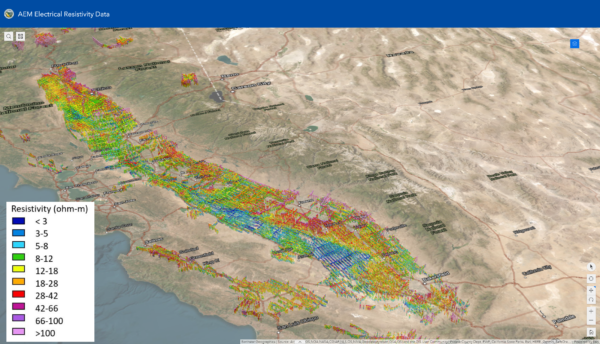 The Department of Water Resources’ (DWR) innovative Statewide Airborne Electromagnetic (AEM) Survey Project has now released AEM data for the entire Central Valley of California, marking a major milestone for the program.
The Department of Water Resources’ (DWR) innovative Statewide Airborne Electromagnetic (AEM) Survey Project has now released AEM data for the entire Central Valley of California, marking a major milestone for the program.
Over 11,500 line-miles of AEM data were collected within the Central Valley between December 2021 and May 2022 using this helicopter-based technology that scans the earth’s subsurface. The AEM data is published on a continual basis, and the most recent release of data from the Northern Sacramento Valley completes the data release for the entire Central Valley. This remarkable dataset provides a never-before-seen continuous view of the structure below the earth’s surface in one of the most groundwater-dependent areas of the world.
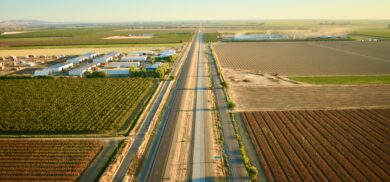
NASA Measures Underground Water Flowing From Sierra to Central Valley
In a recent study, scientists found that a previously unmeasured source – water percolating through soil and fractured rock below California’s Sierra Nevada mountains – delivers an average of 4 million acre feet (5 cubic kilometers) of water to the state’s Central Valley each year. This underground source accounts for about 10% of all the water that enters this highly productive farmland each year from every source (including river inflows and precipitation).
As water grows more scarce in the Central Valley due to climate change and human use, a more detailed understanding of the natural movement of groundwater offers a chance to better protect the remaining resources.

FUNDING OPPORTUNITY: Dept. of Conservation Accepting Applications for Round 2 of Land Repurposing Program
 From the Department of Conservation:
From the Department of Conservation:
Applications for $40 million in Round 2 grants from the Multibenefit Land Repurposing Program, part of Governor Newsom’s multi-faceted response to the ongoing drought, can be submitted now through March 29.
The California Department of Conservation just released new guidelines for this program, which funds repurposing irrigated agricultural land in areas impacted by the drought and years of groundwater overdraft.
“Despite the amount of precipitation we’ve received recently, we’re not out of the woods when it comes to long-term water issues and drought,” Conservation Director David Shabazian said. “California’s recent big storms exemplify the need to increase aquifer recharge in wet years and to minimize the impact of reduced groundwater use going forward. Strategic land repurposing in areas that were historically floodplains or can be flooded when rivers are running high is a key opportunity enhanced by this program.”
The Multibenefit Land Repurposing Program aims to increase regional capacity to repurpose agricultural land by supporting projects that not only conserve groundwater but also provide community health, economic well-being, water supply, habitat, and climate benefits.
Conservation accepted public comments on the new guidelines for a month. Some of the key adjustments to this year’s guidelines include adding disadvantaged community benefits as its own selection criterion, as well as clarifying project eligibility, the application review process, project monitoring expectations, and eligible costs.
In 2022, its initial year, the program funded four grants to organizations based in Tulare, Monterey, and Madera counties plus one statewide award to provide support to block grantees and help other organizations develop competitive applications for future rounds. The program received a dozen applications for more than $110 million.
In Round 2, the Multibenefit Land Repurposing Program will grant up to $40 million for projects in critically over-drafted groundwater basins as well as high- and medium-priority basins subject to an emergency drought declaration. Round 2 awards are tentatively scheduled to be announced on June 1.
Click here for more information on the Multi-Benefit Land Repurposing Program.

Tamping Down on the Dust
 DUST STORMS. Pest scourges. Diseased fungus.
DUST STORMS. Pest scourges. Diseased fungus.
As a historic drought drives water scarcity throughout the Western United States, these are some of the threats looming over hundreds of thousands of acres, experts say, if California farmland is left to dry up in coming years.
The drought has particularly dire implications for the San Joaquin Valley, the state’s agricultural heartland. The region is home to a $35-billion farming industry, which has had relatively unhindered access to water. But these days, with a relentless drought and a warming climate plaguing the West, the flow is looking less certain. Furthermore, decades of overdrawing groundwater to supplement surface supplies are finally catching up, leaving Central Valley aquifers depleted.
Enacted in 2014, California’s Sustainable Groundwater Management Act (SGMA) aims to reverse the trend by tightening restrictions on pumping, drilling, and deepening wells in order to restore underground basins. Yet those limits, coupled with deep slashes in surface water allocation, have already dried up some 752,000 acres of farmland statewide in the past year.Left fallow, dry fields can kick up a host of dusty consequences. … ”

Economic impacts of SGMA on dairies and beef cattle
 “Dairy Cares and the California Cattle Council commissioned ERA Economics to prepare an assessment of the economic impact of SGMA on dairies and beef cattle in the San Joaquin Valley.
“Dairy Cares and the California Cattle Council commissioned ERA Economics to prepare an assessment of the economic impact of SGMA on dairies and beef cattle in the San Joaquin Valley.
SGMA implementation is continuing across California. Sustainably managing water resources provides long-run benefits for our agricultural industries, but these come with more immediate adjustment costs.
Our team at ERA Economics has been working with our agricultural industries to develop data and tools to understand SGMA implementation, how it will affect the industry, and help businesses proactively plan to minimize economic costs. The most substantial adjustments to SGMA are expected in Critically Overdrafted Subbasins, many of which are in the San Joaquin Valley.
The effects of SGMA are highly local. One of the key industries that will be affected through SGMA implementation is California’s $29 billion dairy and beef cattle industry. … ”
